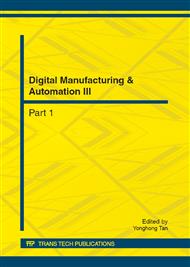p.977
p.982
p.987
p.993
p.998
p.1002
p.1006
p.1010
p.1016
Imaging of Transmission Equipment Based on Block Compressed Sensing
Abstract:
Imaging the overhead transmission equipment with high-resolution is very important to intelligent inspection, which is the prerequisites for fault diagnose. The intelligent inspection system often takes traditional imaging process of data acquisition followed by compression, which leads to the waste of image data and memory resources. We adopt an imaging method based on block compressed sensing to image the transmission equipment, the simulation results show that even if we only compressively sampled with 12.5% of the fully acquired image data, the image still can be recovered with high quality.
Info:
Periodical:
Pages:
998-1001
Citation:
Online since:
July 2012
Authors:
Price:
Сopyright:
© 2012 Trans Tech Publications Ltd. All Rights Reserved
Share:
Citation:


